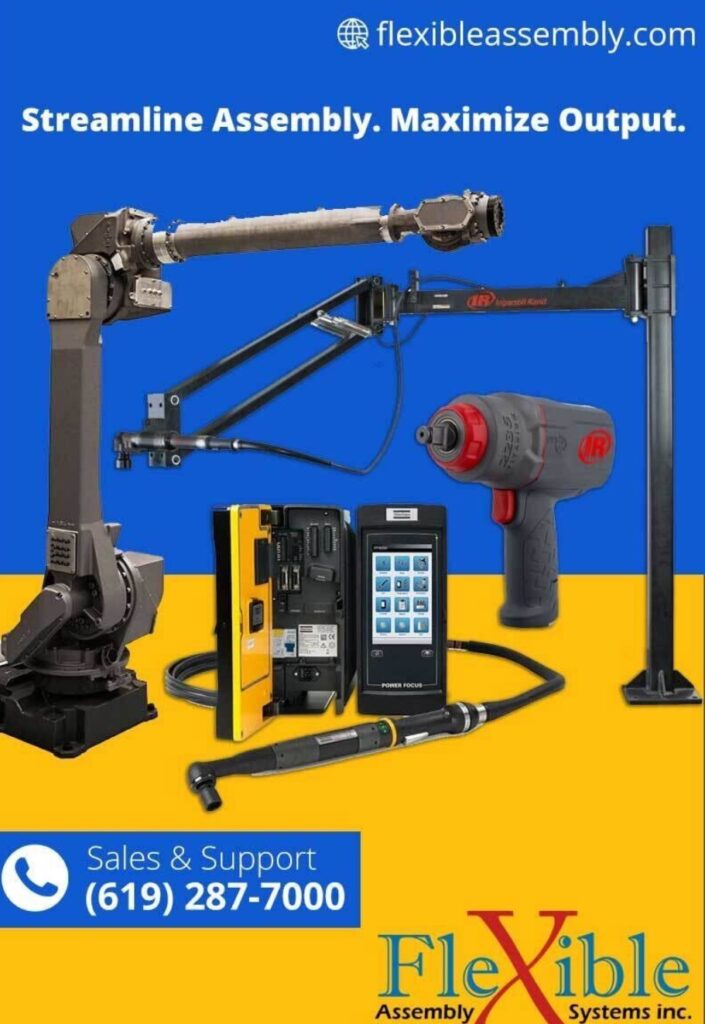Manufacturing plants often grapple with efficiency in repetitive processes like assembly and parts handling. Smart automation provides answers. Screw feeders, for instance, orient and sequence small components for pickup while air driver motors secure placements with proper torque. This article explores the sizeable cost reductions possible when upgrading old manual approaches to modern flexible feeding systems.
The Pitfalls of Manual Labor
Operators manually feeding screws, bolts and other fasteners is commonplace. But as staffing challenges and inconsistencies build over time, such tedious routines incur rising expenses and limitations including:
Slow Pace – Humans cap out around 700-1,200 hourly parts placements depending on size. That hampers overall line throughput. Shortfalls will only worsen as production volumes expand.
Quality Issues – Mistakes inevitably increase over long shifts fitting small components. Concentration also varies across work teams and individuals, impacting assemblies.
High Labor Costs – While variables exist between developed regions versus lower-wage countries, hourly workers still account for significant overall budgets. Staffing constraints like illness, training and retention likewise prove problematic.
Changeover Delays – Any fastener adjustments between product variants requires production pause for workcell alterations and retooling. That cuts into revenue.
Ergonomic Strain – Repetitive motions from picking, orienting and securing tiny components eventually inflict physical damages. Injuries rise over years of continual stress.
Thus while manual insertion sufficed previously across electronics, automotive and medical devices, exponentially improving automation now provides vastly faster and more reliable solutions.
Automated Screw Feeding Overview
Modern Screw feeders use vibration and integrated vision to orient and sequence parts for targeted delivery. This enables a steady stream of components constantly ready for next-step robotic or hard automation. Though operating principles vary by device, key aspects include:
- Component specific hoppers and tracks handling anything from microfasteners to large molded plastics
- Customizable variable vibration patterns fluidizing parts using ideal frequencies
- Aligned delivery mechanisms adjoined to secondary equipment
- Rapid changeover adjustments possible between fastener types
- Particular escapement selecting optimal orientation positioning
- Integrated confirmations guaranteeing correct sequences
With flexible feeding machinery instead of fallible staff, operations gain consistency in presentations along with superior speed. Parts move rapidly from bulk to sequenced orders without pause.
Let’s examine the sizable benefits further…
The Advantages of Automating Feeding
Modern programmable feeders provide various upgrades, including:
- 10-100x faster component delivery, removing constraints for overall line pace
- 24/7 production with minimal supervision to enable lights-out expansion
- Rapid changeovers when alternating between screw types and sizes
- Handling a wide spectrum of vibratory needs regardless of geometry
- No more labor costs, risks or hourly barriers
- Preventing repetitive strain injuries from continual manual motions
As mentioned, key complementary equipment magnifies the advantages. VISION-guided robots, for example, cherry pick required parts mid-air as they eject in perfect sequence from the integrated feeder bowls. Software confirms each selection is accurate before permitting fine-tuned pneumatic drivers to precision torque placements.
Purpose built for verticals like automotive and electronics, smart feeding automation delivers unmatched reliability plus optimized simplicity. But where exactly does it best upgrade operations?
Optimizing Automotive Ops
Vehicle production historically relied upon manual insertion for stuffing wire harnesses, controllers and various sub-assemblies. But rising regional wages paired with increasing model complexities make yesterday’s status quo unsustainable. Instead smart feeders present the ideal automation solution for component preparation/presentation when integrated with articulated robots and software-monitored pneumatic drivers.
Consider a few real-world customer examples:
- 400-800% faster feeding rates for wires, pins and metal inserts vs hand assembly.
- Power Screws inserted at impossible angles for human operators.
- Management of torque specifications adapted to each vehicle platform.
- 90%+ labor cost reduction having machines operate 24/7 after shifts end.
Today’s automobile volumes demand programmable feeders’ speed, precision and consistency. As appearances evolve with more electronics, automakers must offset rising expenses through automation. Purpose built vibratory bowl solutions future-proof the factories.
Driving Electronics Productivity
Printed circuit board (PCB) manufacturing still relies extensively upon manual labor across most regions outside western markets. However, even China’s lower salaries cannot offset personnel’s intrinsic limitations. This makes modernizing essential for scalable success and satisfying international exports.
Here Feeders enhance electronics assembly markedly:
- 10x+ faster automated placements versus even the fastest human teams
- 97%+ first pass quality yields thanks to integrated confirmations
- Rapid changeovers with quick tooling adjustments between component variances
- 24/7 unattended production independent of staffing constraints
- 80%+ cost savings over manual labor and tedious oversight
Where volumes scale up, offsetting repetitive tasks via programmable equipment ensures reliability and speed simply impossible through manual means. The machines never tire.
Optimizing Medical Devices Assembly
Lastly medical devices production requires enormous flexibility between components across continually advancing product families. This variation traditionally causes downtimes for changeovers. Manual sub-assembly steps also prove disproportionately expensive to maintain given industry margins.
Thankfully today’s smart feeding systems shale both roadblocks through:
- Streamlining tiny device fastener preparation without jams
- Guaranteeing proper part sequences to avoid contamination
- Quickly alternating between varying feed rates, orienting geometries and diameters
- Enabling scalable output without rising proportional expenses
Beyond material handling, integrated robotic precision screwdriving provides accurate torque control hospitals require while eliminating bottlenecks. This allows medtech firms to shift finite engineering talent towards design innovation rather than production support.
Additional Savings Opportunities
As repeatedly emphasized, modern programmable screw and small component feeders minimize costs through unmatched speed, changeovers, reliability and precision versus manual approaches. However when appropriately integrated with secondary downstream automations, overall savings multiply further.
Supplemental machines like escapement self-sorters, articulated robots and computer vision quality checks help ensure:
- No flaws in sequences through multiple validations
- Automated sorting and kitting for just-in-time use according to product type
- Adaptable tooling for varying needs across mixed-model lines
- Robust quality data tied to individual feeding systems
- Rapid insights into optimal throughput rates by component
While smart feeders provide an excellent cornerstone bot enhancing operations through faster component delivery and preparation, combining flexible feeding with the above supplemental equipment takes things to an even higher level for reliable automation.
Why Choose Flexible Assembly Systems?
Flexible Assembly Systems brings decades of expertise in designing and delivering custom automation solutions. Whether you need high-speed vibratory screw feeders, precision air motors, or fully integrated pick-and-place robotics, our systems are built to handle the challenges of repetitive industrial operations.
Here’s why manufacturers across automotive, electronics, and media tech industries choose us:
- Tailored Solutions – We don’t force generic hardware. Every feeding or driving system is designed around your exact part specs, cycle times, and production goals.
- Modular Components – From quick-change vibratory bowls to adjustable escapement systems, our feeders are made to adapt fast between product types.
- Seamless Integration – Our equipment pairs effortlessly with vision systems, robots, PLCs, and HMI interfaces to fit into your factory layout without major rework.
- Data-Driven Efficiency – Track feeder performance and part counts in real-time, and detect jams or torque issues before they affect output.
- Support that Scales – We offer on-site consultations, training, and remote diagnostics, ensuring your automation delivers long-term ROI without constant hand-holding.
Whether you’re ramping up volumes or improving an aging workcell, our feeding technology helps cut costs, improve quality, and unlock 24/7 performance without overengineering.
Conclusion
When evaluating repetitive industrial processes, today’s fast-evolving production environment requires upgrading antiquated manual approaches to optimize reliability, quality and reduce expenses. Programmable screw feeding systems eliminate bottlenecks through software adjusted vibratory bowls effortlessly handling variable components. This allows articulated robots, swappable tooling and other secondary automations to maximize workflow.
Contact Flexible Assembly to explore where sequencing small parts feeders could enhance your automation goals. With real-world installations optimizing automotive, electronics and medical devices production at present, our proven solutions provide the next evolutionary stepping stone for scaling smart factory output without inflating proportional costs. Just let us know your ambitions and our team will happily create a tailored roadmap to upgrade any repetitive processes presently dependent upon fallible operators.


